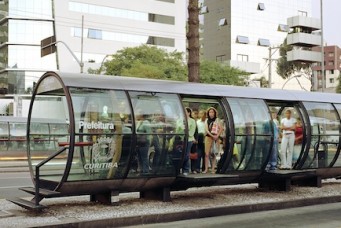Upgrading Urban Egypt
The state has turned a blind eye and because of the lack of accountability and the current political uncertainty no long or short term solutions to such fundamental infrastructural problems have been initiated.
Transport, potable water, electricity and sewage networks in Cairo and across Egypt are in desperate need of development and upgrading. While some recent accidents have highlighted the poor state of this network—take for example the numerous train accidents in recent months and their high human cost—the state has turned a blind eye and because of the lack of accountability and the current political uncertainty no long or short term solutions to such fundamental infrastructural problems have been initiated.
The spectrum of political parties on the scene since Egypt’s 2011 uprising has not demonstrated any serious engagement with physical infrastructural needs of Egyptian cities in their political programs. The present situation, however, is alarming, and while the Mubarak regime carried out infrastructure project haphazardly lacking a comprehensive vision, this approach to governance and building cannot be afforded in the years to come.
Although the level and accessibility of basic services in Cairo is remarkable for a city its size, especially considering the minimal investment and development of infrastructure, a crisis is approaching. Not only has pressure on existing systems been continuously increased, entire new areas have developed in recent years in a process of real estate speculation that has produced millions of uninhabited square meters of residential space in the interstitial spaces between the core city and desert extensions. Desert cities also exert a new pressure on infrastructure systems, which have been planned in a way that favors these new low-density (and primarily wealthy) areas with a high margin for waste, particularly in water systems. Additionally these new cities lack a fundamental infrastructural component: transport. What will happen when these thousands of currently empty apartments and houses in these new satellite neighborhoods are occupied with families? These car-dependent residents will exert a huge amount of pressure on the Cairo’s road network as they drive from far-flung desert cities, accessible only by car.
In addition, massive swaths of self-built districts on previously agricultural land largely rely on infrastructure that was not designed for dense urban areas. Immediate intervention and upgrading is necessary in such areas to provide not only better access to drinking water and sewage but also appropriate services such as health and educational facilities. In short, the task of confronting Egypt’s and Cairo infrastructural challenge is pressing and difficult, but it also presents opportunities for development, employment, skill-training, and overall improvement of quality of life.
Improving streets and sidewalks, long neglected by the state and international donors, is a basic infrastructural project that would have a universally positive impact on urban life. A well-kept system of streets and sidewalks has not been a priority for infrastructural development despite its potential improvement impact and its low costs. Improving sidewalks in urban Egypt will reduce traffic congestion and travel time, reduce reliance on vehicles, and foster a sense of community. Egyptian cities, despite the relatively low percentage car-ownership (only 14 percent of households owning cars in Cairo), are not pedestrian-friendly places. In addition newly urbanized “informal districts” often lack not only sidewalks but also paved streets.
Similarly, there is a tremendous need for an upgraded public transport network in metropolitan areas. While plans have been in the pipeline for an expanded underground train network in Cairo and the introduction of an underground system in Alexandria, these projects have been either stalled or are being implemented at such an excruciatingly slow rate that they miss the opportunity of having a measured impact by their planned time of completion. It is important to note that the cost of building an underground system in Egypt continues to be relatively cheap compared to international standards, costing roughly one-tenth per kilometer of the cost in Europe or North America.
Transport hubs must be established to the east and west of Cairo’s city-center to link the capital with the desert cities beyond. Abbasiyya, for instance, could serve as a transport hub linking Cairo with New Cairo to the east; Munib could link Giza with 6th of October City to the west. Although proposals have been made in the past as part of the pompous and deeply flawed Cairo 2050 vision, such visions were never translated into actual plans and they largely denied the existence of complex communities and conditions in the locations of such envisioned interventions.
What is perhaps more important than specific recommendations for infrastructure projects beyond improving transport and walkability, health and educational facilities and maintaining a sufficient network of utilities, is the need to confront Egypt’s soft infrastructure, the institutions required to maintain and manage hard infrastructure such as roads and utility networks. These institutions, particularly the municipality, are key to reducing the gap between the state and citizens. Without rigorous reconfiguration of the state institutions responsible for conceiving, implementing and managing hard infrastructure projects, future development will fail to confront the challenges on the ground.
For the last four decades, development and infrastructure projects have lacked key aspects of successful and long-lasting development: a culture of maintenance, quality control, and accountability. Rather than schedule periodical maintenance into development projects, the state has tended to build facilities; roads and bridges then nearly abandon them until a crisis, collapse or accident takes place. Similarly standards for building materials and finishes have not been strictly monitored and regulated and often budgets of public sector projects are wasted on expensive finishing materials, such as granite, which are not necessary or functionally practical. However due to the absence of accountability such missteps go unchallenged.
But perhaps the single most important reform needed to bring a radical positive transformation to urban Egypt, including the better planning of its needed infrastructure, is the rebuilding of local municipal councils. Currently, planning and infrastructure projects miss the mark. In every urban and rural community in Egypt there are leading figures that can take an active role in local government to represent the interests of their communities. But such figures are shut out from policy making. Instead local government administrations have acted as tentacles of central government control. Communities on the local level must have proper channels to connect with central government regarding matters that affect their daily lives, from transport to utilities. The rebuilding of local councils will not only lead to more efficient infrastructure planning but will also reduce the political tension between the state and local communities.
There isn’t an easy prescription for how to mend the cities in a country that has suffered from decades of neglectful rule and minimal planning intervention. Egyptian cities and towns need not a top-down “renaissance project” or an ill-conceived vision for the future. Design alone won’t fix Egypt’s urban and infrastructural needs. Rather, there must be a serious reconsideration of the place of communities and citizens as participants in the built environment. Without sound policy and a fundamental shift in political will from authorities, lofty ideas and proposals will yet again melt into thin air.
Mohammed Elshahed is the founding editor of the Cairobserver, a publication on Egypt’s architectural heritage and urban planning. He is a doctoral student in the Middle East and Islamic Studies Department at New York University. He has written for the Egypt Independent, Jadaliyya, Design Observer, and Al Jazeera English. On Twitter: @Cairobserver.
Subscribe to Our Newsletter





